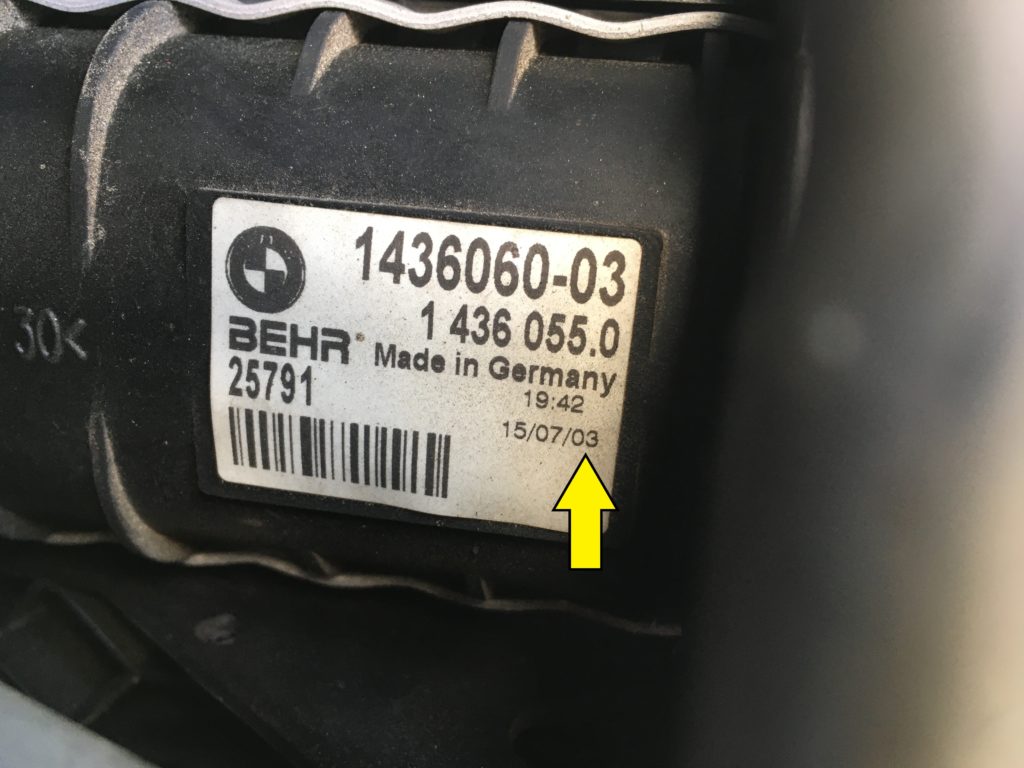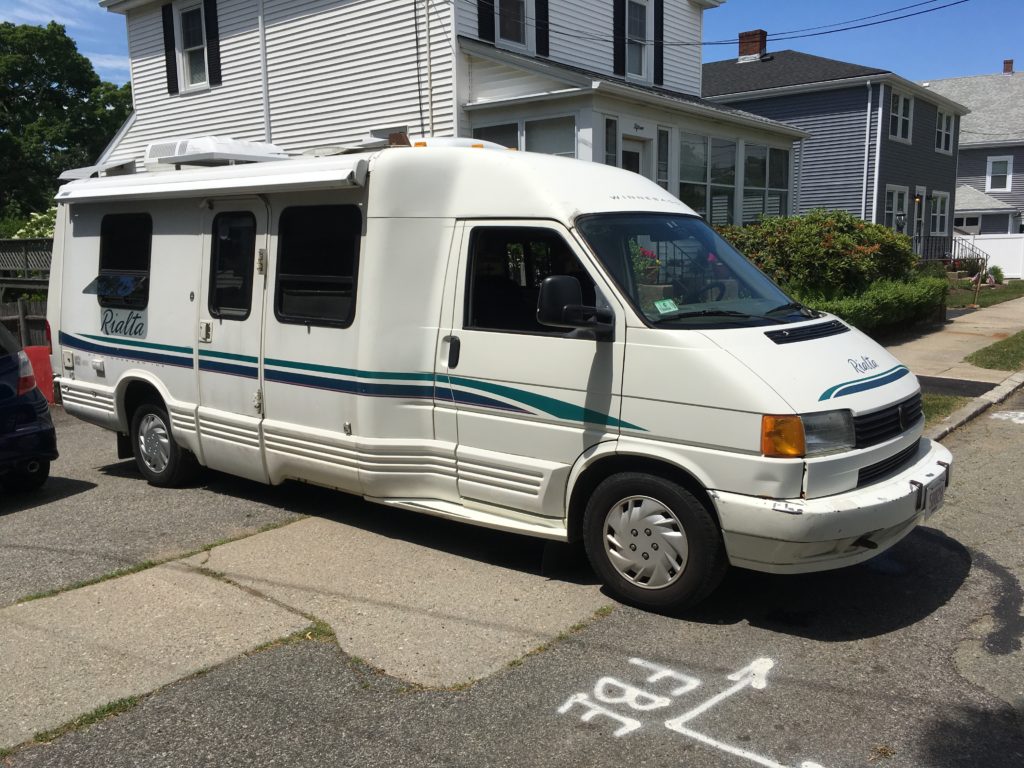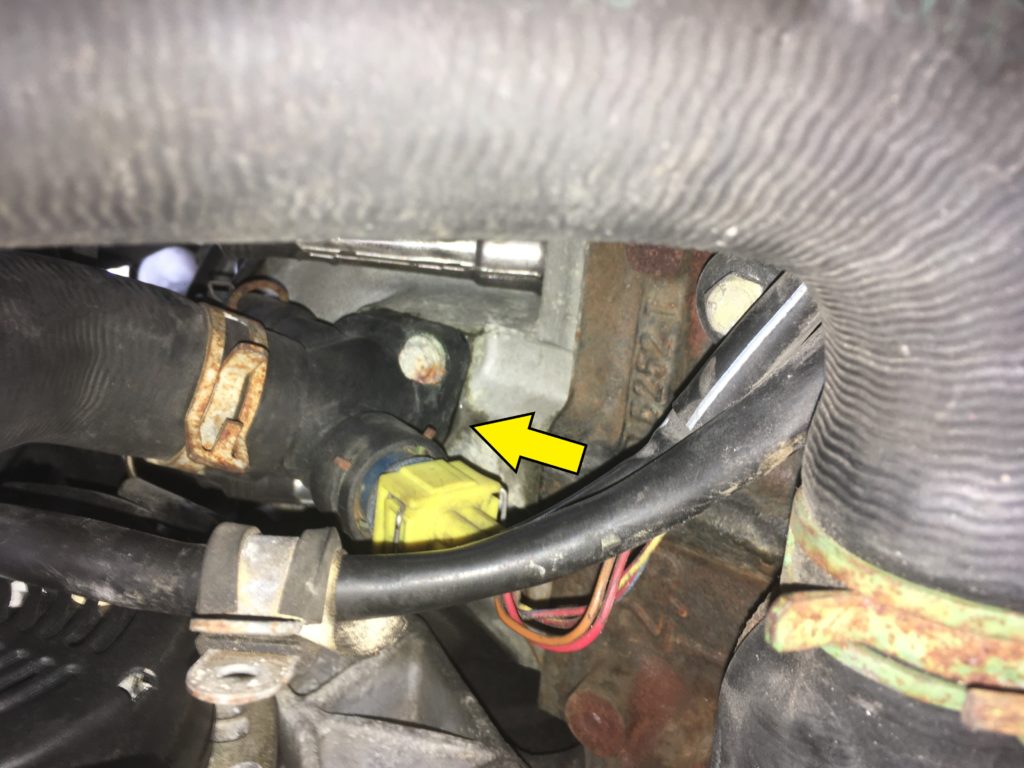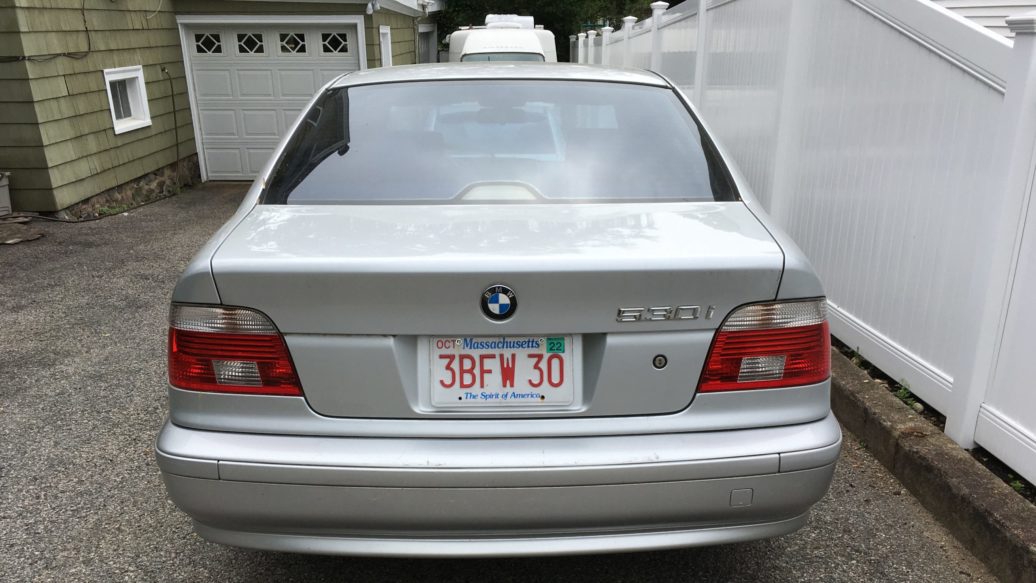In several of my past columns, I’ve been whining about my 2003 E39 530i stick sport. I bought the car 5-1/2 years ago, so it’s been around longer than most of my daily drivers. It fell into my lap during a brutally cold Presidents Day weekend when I had little to do but pound on Craigslist and play the “What manual-transmission BMW would I buy for short money?” game.
When I saw the ad for a dead-in-a-snowbank E39 stick sport, I thought maybe I’d get an article out of it; when I tossed a battery in it and it started right up, I was certain. And when I drove it, after the shortest negotiation on record, it was mine for $1,500.
Other than a smoke test to find the tiny deteriorated hose on the back of the head that was triggering the evap-system code that lit the check-engine light, and replacement of a final-stage unit (FSU) that was draining the battery, the car needed almost nothing for me to begin daily-driving it. I kept waiting for the other shoe to drop in terms of why the car had been parked, but it never did. I tend to like smaller, lighter BMWs, but this E39 wormed its way into my heart like no other daily in decades: It’s got exactly the right amount of power. It handles fabulously. Its sport seats are so supportive and comfortable that I can drive it without the Tempur-Pedic back pillow that I use for most other non-Recaro-equipped cars. It’s got the best-sounding stereo of any car that I’ve owned. And while it’s not a wagon, the split fold-down rear seat offers a lot of versatility in terms of stuff-hauling.
However, the car had zero maintenance records when I bought it; it is about to roll over to 200,000 miles, and several deferred-maintenance issues are rearing their heads.
The biggest incident occurred about a month ago, when it cyclically lost power on me in hot weather when the fuel tank was low. I keep vacillating between wanting to tear it apart and systematically check the fuel system and wanting to just install a new fuel pump and assume that this will solve the problem.
But looming in the shadows is the specter of cooling-system failure. As you probably know, since the 1980s, BMWs have used increasing amounts of plastic in the cooling system. It began with just the plastic expansion tank on E28/E30-era cars, but then spread like a virus to aluminum radiators with plastic tanks at the sides or bottoms, plastic thermostats, water pumps with plastic impellers, and hoses held to components with snap-on plastic ends instead of traditional clamps. I’ve done the full-on prophylactic cooling-system replacement in nearly every BMW I’ve wanted to depend on as a daily driver, and several of the lightly-driven newer cars like the Z3 and the M coupe.
But I’ve never done it to this E39. Why not—because I’m an idiot? Well, it’s a little more nuanced than that.
Three daily drivers ago, I had a 1999 E39 528iT stick sport wagon. It was highly desirable on paper, yet turned out to be one of those cars that, when you bought it, you signed up for the repair-of-the-week plan and didn’t know it. I did everything you’re supposed to do: cooling system (including those difficult-to-replace hard plastic lines), front and rear suspension rebuild, crankcase vent valve—and other things broke. I finally sold it because its needs were that of an enthusiast car, when I needed it to be a daily driver.
So I decided to treat this 2003 E39 differently: not fixing things that weren’t broken, and not turning the $1,500 bargain into a $2,500 better-maintained car that I wouldn’t have bought. This meshed well with the six-mile commute I had to my job at Bentley Publishers in Cambridge when I bought the car, and then with my zero-mile commute when I began working from home as a self-employed writer.
I almost took a kind of pride in this new approach; the car kept running, with me doing nothing. It was as if the car wore a suit of armor, or at least some cosmic automotive aura, made of its original parts. (In fairness, the E39 has received some love; I did the thrust arms this past winter, and the CVV last spring).
But with the still-undiagnosed fuel-delivery issue having chinked that armor/aura, I began looking at the cooling system. I squeezed the hoses and found the lower radiator hose alarmingly soft. Rockauto had a closeout on a Dayco-Carquest hose for $15 shipped, so I bought just that, fully realizing how silly it was… unless I was just going to sell the car.
Was I just going to sell the car? No—I like it, it costs me very little, and there is no clear replacement I’d prefer (except maybe an E46 rear-wheel-drive stick wagon). So I resolved that I’d drain the cooling system, begin pulling it apart, look at the date codes on the components, and made intelligent choices based on what I found.
Well, I didn’t even need to pull anything apart. I can see the date code on the side of the radiator. It’s original—as is the upper radiator hose. On an E39 with 200,000 miles. Sheesh.

What is seen cannot be unseen.

What is known cannot be unknown.
And when I unscrewed the radiator cap on the expansion tank, I found that the float-level sensor was at the bottom of its travel, so it’s possible that there’s a small crack in it. Rather than simply top it off with $30/gallon BMW coolant, I think I’ll first buy the adapter I need for my Stant pressure tester to help find the leak—but regardless, the E39 530i stick sport is finally going to get a cooling system, at least the normal-wear-and-tear stuff (expansion tank, front hoses, thermostat, water pump, radiator).
The fan clutch feels fine; maybe I’ll replace the fan blades. If any other hoses feel pillowy, I’ll do those. I don’t have the stomach to tackle the hard plastic pipes.
Let me switch gears for a moment to the Winnebago Rialta, the little Volkswagen Eurovan-based RV that Maire Anne and I have owned for four years. We use it mainly for two and three-day trips to campgrounds near the beach. It’s an early Rialta, a ’96, so it has the 100-horsepower five-cylinder Audi engine, and is thus as slow as the VW campers of yore. But it’s a cool vehicle, a great drive-anywhere-park-anywhere size for what we use it for. If nothing else, a vehicle with both a trailer hitch for a bike rack and a bathroom inside is truly life-changing.

The little (for an RV) VW Eurovan-based Rialta is a fun vehicle to own, but it’s getting needy.
Its maintenance profile, however, is fairly analogous to the E39. The previous owner used it for a few trips to Assateague Island off the Delmarva peninsula. Service records show that she dumped a fair amount into repair and maintenance in 2010, but then its usage dropped, and it sat until I bought it in 2017. Other than the charging voltage falling alarmingly if the car is idling and the air conditioner’s blower fans are on, it hasn’t seemed to need much, and so, like the E39, we’ve been blithely motoring along in it on our short excursions.
But RVs, even small ones, are a pain if they die. AAA generally won’t tow them. I’ve had a roadside-assistance policy with Good Sam (the AAA of RVs), but even so, it’s very disruptive and expensive to deal with RV repairs on the road. The Rialta may be based on a VW Eurovan, but Volkswagen dealers don’t want to deal with it because of its size and weight, and RV shops don’t know the Eurovan’s quirks.
I re-insured and re-registered the Rialta in late May and began a general sort-out, but I was slow. With a campground trip to Provincetown scheduled for July 22, I needed to stop vacillating about the E39 and start concrete action on the Rialta.
Working on this van is not easy. It won’t fit in my garage, and to jack it up safely on my driveway, I needed to set both the floor jack and the stands on metal plates to prevent the possibility of its sinking into the asphalt.

Even doing this is not trivial; it’s a 7,000-pound vehicle. You really don’t want to be wrong about how well it’s supported when you’re under it.
The boots on the lower ball joints had split, so I replaced both with good German Lemforder parts. This gave me a chance to give the under-engine a through inspection. I replaced a long-leaking a/c receiver-drier and recharged the system. (I know you’re stunned that I prioritized a/c work, but you know… happy wife, happy life!) I also replaced a noisy a/c compressor pulley bearing; its metallic ringing sound had bugged me for years. I tried to install a new serpentine belt, but I could not get it to fit, even with the tensioner pulled all the way back. I thoroughly inspected the old belt, saw no cracks, and put it back on.
When I went to re-mount the wheels, however, I noticed that although the tire sidewalls were fine, the fronts were showing some cracking in the treads. I checked the date codes of the tires and found that they were from 2008. I’ll sometimes take chances with tires that many others wouldn’t, but on a 7,000-pound vehicle, you really don’t want to be wrong about this (and from a purely practical standpoint, I don’t want to travel with the 60-pound floor jack needed to safely lift a wheel), so I ordered a set of the very-specific weight-rated tires that the RV needs.

Yeah…
While the little-but-not-light RV was still up on jack stands, I thought that I might address the issue of low alternator charging. I’d bought a voltage-regular/brush pack for it years ago and put it in one of the cabinets in case the charging failed altogether. Regulators are much cheaper and easier to replace than the whole alternator, and worn brush packs are often the cause of intermittent charging issues.
I found the spare regulator in the cabinet, and unscrewed the cover from the back of the alternator that shields it, but clearance was so tight that I could not figure out how to maneuver the cover off in the tangle of cooling hoses that were blocking it. I posted the question to a Rialta forum, and the answer was, “Yeah, you can’t change the regulator with the alternator in the car.” Damn! Okay, I guess this one has to wait. I’ll shift into neutral, left-foot brake, and goose the gas when I’m idling in traffic to keep the rpms up, as I’ve been doing for years.
Then I took the little RV to a car wash to pressure-wash the mildew off the fiberglass sides from its having sat outside. Afterwards, it looked clean and shiny and happy. I smiled.
And then it wouldn’t start.
It cranked fine, but there wasn’t even the hint of a burble. This had happened once before, at the very same car wash, with a 1992 FZJ80 Toyota Land Cruiser I had for a few years; I’d pressure-washed the Land Cruiser’s engine compartment, so a no-start from water on the plug wires and maybe under the distributor cap was understandable. But with the Rialta, I’d never even cracked the hood.
I was alone, so I had no way to do the you-crank-while-I-check-for-spark thing. And I looked in the cabinets for starting fluid to check for spark, but didn’t find any. I tried restarting the Rialta at regular intervals for the next few minutes, and it wasn’t long before it roared back to life without a hint that there had been anything wrong. There were a few instances of low-rpm stumbling power loss while I was driving home, but it never died. I recalled that it had done the stumbling thing after I revived it last year, and it went away, perhaps some unknown artifact of the car having sat for months.
I got the Rialta back home, put it back up on stands, and was alarmed to see a few drops of coolant near the bottom of the engine. I traced it upward and found that it was weeping coolant from a plastic neck that bolts to the side of the head.

Just enough for me to lose sleep over.
Although this Rialta is a ’96, it’s actually built on a 1995 Eurovan platform, which means that it doesn’t have the standard OBD-II diagnostic connector, so I couldn’t plug in a standard code reader to see if there were digital footprints from the no-start. It does have the older Volkswagen-specific pair of two-prong diagnostic ports, but you need a cable and the Volkswagen-specific VagCom software to read it, and I don’t have them.
I did some reading on Eurovan and Rialta forums, and found a handful of posts related to car wash or wet-weather death, possibly due to the location of the car’s ECU just inside the firewall, where water could potentially get through the grommets and corrode connections—but I didn’t find any evidence of that. Other posts led down a lengthy rabbit hole involving the Volkswagen’s Digifant ignition, which on this car still has a conventional distributor cap, rotor, and plug wires.
Well, now. Road-tripping old BMWs to the Vintage or other destinations with me driving solo, but generally as part of a small caravan of friends, is one thing. Provincetown is at the tip of Cape Cod, about two and a half hours under cover of darkness, possibly double that if nightmare-levels of traffic are involved. Was I going to take my wife in an RV that had just drifted across the line from under-maintained to having known active problems, or was I going to cancel the only mini-vacation we have planned all summer?
I looked at the coolant leak from the plastic neck on the head very carefully, vividly recalling the time the plastic coolant neck snapped off the back of the head on my 318ti with zero warning, resulting in massive coolant loss and a tow truck home. But the more I looked at it, the more I thought that the small amount of coolant weeping could have been due to my having been leaning hard against that plastic coolant neck and had relieved some pressure on the rubber seal while I was trying to pull the cover off the alternator.
I drove the Rialta for about ten miles in circles around my neighborhood, experienced no running issues, returned home, rechecked for coolant weeping, found none, then drove it about fifteen miles on the highway. Other than the still-less-than-optimal charging that was manageable by lowering or switching off the a/c blower fans, it ran fine.
I also looked back at the repair records and found that the Rialta had had a $3,900 major service in 2010, including the water pump and timing belt, auxiliary electric water pump, thermostat, cooling pipe, and most of the ignition parts. Granted, this was eleven years ago, but only 11,000 miles have been put on the rig since. That made me feel a bit better about the underlying maintenance baseline.
So I hatched a plan:
- I renewed the Good Sam’s roadside-assistance plan.
- I ordered a replacement for the plastic coolant neck, just in case. I wouldn’t want to change it roadside, but having the part would let a shop get the vehicle in and out that much quicker.
- I located the fuel-pump relay, made a jumper wire to connect Pin Socket 30 to 87, and tested to to be certain that I could hear the fuel pump turn on, so if the car dies, I can test it and know whether or not I have a bad fuel pump.
- I ordered an inexpensive drop-in fuel-pump assembly, just in case (this is exactly what I’ve been avoiding doing with the E39). Unlike the coolant neck, I probably would change the fuel-pump assembly roadside if I had to; it’s just under the rug.
- My cigarette-lighter voltmeter isn’t that accurate, so I ran two wires directly to the battery and connected them with a dual banana plug directly to my Fluke multimeter, mounted on the dash, to get charging readings I can trust.
- The correct 120-amp Bosch alternator is a bit pricey to buy “just in case,” so I’ll pack a spare fully-charged battery in case the alternator dies altogether. The one from my E39 fits fine.
Back to the E39: The parallels are obvious. How much repair of known problems and preventive maintenance of potential problems do you need to do in order to feel like a vehicle is “dependable”—and that what does that even mean? Dependable around town? Dependable enough for a drive of a few hours? Dependable enough to not leave you stranded on a real road trip?
Look, any car can die at any time. I’ve made a near-career out of writing about the Big Seven things likely to strand a vehicle (fuel delivery, ignition, cooling, charging, belts, ball joints, and clutch hydraulics, with #0 being tires). In general, as long as the crankshaft-position sensor doesn’t fail, modern coil-on-plug vehicles are much better than vintage cars in terms of ignition issues, so it’s unfortunate that the Rialta still has an asterisk over this one.
The issue really comes down to how much of an idiot you’ll feel like if the car dies and the cause is something you knew about but chose not to deal with. If I drove the E39 somewhere and either the fuel pump died or the cooling system blew up, yes, I’d feel like an idiot. Therefore, those things need to be fixed, and they will be.
I tried to step back and look at the Rialta and the issue of this short trip to the Cape. If it was serially dying or even obviously stumbling, I wouldn’t take it. If the alternator wasn’t charging, I wouldn’t take it. If it was actually leaking antifreeze, I wouldn’t take it. Right now, however, it wasn’t doing any of these things. I wish that it hadn’t had the car-wash-no-start incident, but without its repetition, I can’t trouble-shoot it.
I think we’re go.
But yes, if it suddenly dies or won’t start, and it’s not the fuel pump, I’ll feel like an idiot. But at least I’ll have an up-to-date roadside-assistance plan.
Wish me luck.—Rob Siegel
Rob’s new book, The Best of The Hack Mechanic, is available here on Amazon, as are his seven other books. Signed copies can be ordered directly from Rob here.





















